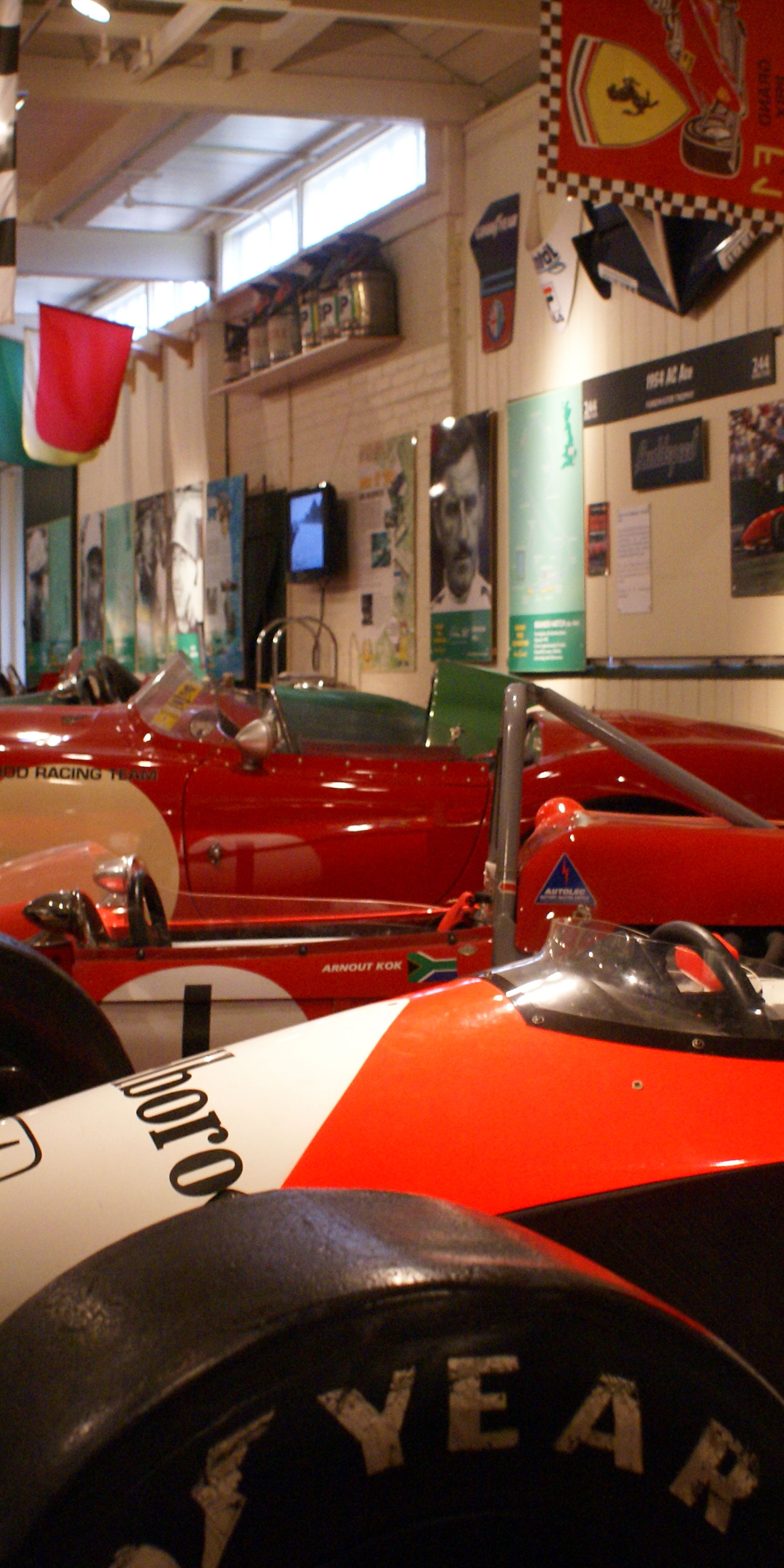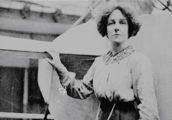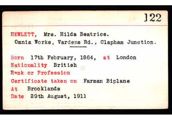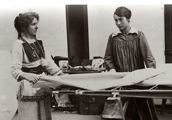Brooklands Stories: Hilda Hewlett
27 February 2021
In this Brooklands Stories, volunteer Peter Kearns shares the story of aviation pioneer Hilda Hewlett.
If you take a walk down Vardens Road in Battersea, when you get to number 4 you will see a Blue Plaque in honour of “Hilda Hewlett (1864–1943) Pilot and Aircraft Maker”. Hilda was born in Vauxhall. At the National Art Training School, she specialized in woodwork, metalwork and needlework. Aged 19 she travelled to Egypt with her parents, and two years later trained as a nurse for a year in Berlin.
The plaque is in Battersea because that is where she and her business partner Gustave Blondeau had their aeroplane building business from 1912 to 1914.
In 1906 Hilda Hewlett had taken part in a motorcar event from Lands End to John O’Groats, as passenger/mechanic for Muriel Hind. As well as being a pioneering motorcar driver, Miss Hind is often described as Britain’s first motorcyclist. She was the only female driver in this event. Hilda was also an enthusiastic motor car driver. In 1909 Hilda Hewlett attended a flying demonstration in Blackpool.
She became enamored with flying and the following year she attended the Farman School at Mourmelon in France with fellow aviaitor Gustave Blondeau. This is where she learnt to fly and maintain her own aeroplane. Hilda was a fluent French speaker, and it is said that she only ever spoke to Gustave Blondeau, her later business partner in French. They decided to set up a flying school at Brooklands. This opened later in September 1910 and ran until 1912 with a Farman III biplane which they named Blue Bird.
Blue Bird seems to have been a popular name at the time. Hewlett’s Farman was named after a play, by Maurice Maeterlinck, that was popular at the time. Malcom Campbell named his cars after the same play, although his son Donald called his cars and boats Bluebird (all one word). Around the same time Mrs. Eardley Billing and her husband set up the Blue Bird café in the Brooklands flying village.
On 29 August 1911, at Brooklands, Hilda Hewlett became the first woman in the UK to earn a pilot's licence when she received certificate No.122 from the Royal Aero Club after completing the test in her biplane. Other names famous in aviation, that flew with the Hewlett and Blondeau School included Tommy Sopwith and Geoffrey de Havilland.
Hilda Hewlett’s son, Francis Hewlett became probably the only pilot to have been taught to fly by his mother. As the aviation industry began to develop, Hewlett and Blondeau started to move into selling engines and spares for aeroplanes and then into building and selling whole aeroplanes. Always keen to be at the forefront of technology, they purchased the first acetylene welding kit in England. With this they carried out work for aviators, aeroplane constructors and even motorists from Brooklands and beyond.
Hilda said: “They seemed to think anything could be mended, even the most impossible things, by this new invention.”
During the Brooklands period, Hilda described life as being rather curious, informal, and communal. She said that there were: “impecunious flying enthusiasts sleeping in packing crates outside the hangar.”
By 1912 the business had become too large for the space they had at Brooklands and so they moved to the Vardens Road site in Battersea. They built Farman, Caudron and Hanriot aircraft under licence. In 1914 they moved production to Leagrave, Bedfordshire as government orders necessitated expansion; by 1919 they had built ten different types of aeroplanes. At one point the Omnia works employed 700 people.
An important and, at the time extremely unusual, aspect of the business was the support and encouragement given to women entering the industry. One of Hilda Hewlett’s personal interests was running a training school for women workers.
This was not the only unusual aspect of Hilda Hewlett. She must have stood out from her peers, with her short, slicked down hair, her ruddy complexion, her unusual clothes and often driving a fast car accompanied by her Great Dane Kroshka (the Russian word meaning baby, or crumb – a splendid name for a Great Dane!).
After the First World War the company diversified into farming equipment and the site was finally sold in 1926 and incorporated into the new Electrolux factory. Much of the equipment was sold to local firms, including the new Vauxhall Cars plant. Hilda Hewlett was then 62 years old.
After some more globe-trotting, Hilda settled in Tauranga, New Zealand, where her daughter Pia lived. Later they were joined by her son Francis. She was active in the founding of the Tauranga Gliding and Flying Club in 1928. She remain in Tauranga until her death in 1943, at the age of 79.
Hilda Hewlett lived a full and active life, a social and technological pioneer prepared to stand out in the crowd. There are reports that her husband did not approve of her flying activities. These may be assumptions based on the norms of the day. There is some evidence that he did not understand why she was interested in “this new-fangled thing”, but he never tried to stop her. In Hilda’s own words: “Maurice was so broadminded about my flying.”
It was the era of suffragettes and when she was due to participate in an event to be attended by the King, she was treated with suspicion which made her angry. She said she was too feminine to use their tactics because “she couldn’t kick or bite”. She went on to say: “I sat in the darkest corner with Kroshka (her Great Dane) and thought of flying the Farman at dawn, dipping to meet my shadow aeroplane on the wet grass, the river all gold, partridges and rabbits just waking up, frightened at the noise. I had my reward, I was happy in my work, and happy in my friends. What did I care for glory or what people thought? I forgave the Suffragette’s, the police and public opinion. I drove back to Vardens Road and tea at Mrs Stiff’s.”
Peter Kearns, Brooklands volunteer




